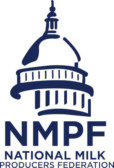
Late last year, the U.S. Congress took a meaningful first step toward allowing schools to once again serve whole milk to their students. By a bipartisan vote of 330 to 99, the House of Representatives overwhelmingly approved the Whole Milk for Healthy Kids Act in December, which would provide children, parents, and schools with the option to serve any variety of fluid milk, including whole milk, which they believe will best meet their students’ nutritional needs. The Senate must pass this bill this year to ensure that our kids can again have access to the milk varieties they prefer.
Whole (3.25% milkfat) and reduced-fat (2%) milk have been banned from school cafeterias for nearly 15 years due to a mistaken belief that higher-fat milk varieties were at least partially to blame for increased rates of childhood obesity. During that time, school milk consumption declined and cafeteria food waste increased, which is not surprising given that many students simply don’t like the taste of the low-fat (1%) and non-fat (skim) milk varieties that can be offered under United State Department of Agriculture’s existing school meals regulations.
Cow’s milk is currently in about 93% of all U.S. homes, and 75% of that milk is whole or reduced-fat. It’s no wonder that kids who drink whole or reduced-fat milk at home find that the milk they are served at school just doesn’t taste as good, and as a result, they don’t drink as much milk as they should.
According to multiple cycles of the Dietary Guidelines for Americans (DGAs), nearly all Americans, including school-age children, need to consume more dairy products because they provide 13 essential nutrients, improve bone health, and lower risk for type 2 diabetes and hypertension (or high blood pressure). Unfortunately, between 68% and 76.2% of school-age males and between 77.4% and 94.3% of school-age females fail to meet recommended levels of dairy intake.
Whole and reduced-fat milk varieties contain the same nutrients as low-fat or non-fat milk, including calcium, phosphorus, protein, vitamins A, D, and B12, pantothenic acid, riboflavin, and niacin. Several recent research studies examining the effect of higher-fat milk consumption found that it was associated with lower risk of childhood obesity and concluded that dietary guidelines that recommend reduced-fat milk versions might not provide a benefit in lowering the risk of childhood obesity. One of these systematic reviews also examined cardiometabolic health in children (2 to 18 years) in addition to adiposity, and concluded that full-fat dairy consumption was not associated with increased body weight and adiposity, or with cardiometabolic risk in children. In fact, higher consumption of full-fat dairy has been shown to be associated with lower risk of total body fat mass in children.
Enactment of the Whole Milk for Healthy Kids Act would encourage milk consumption within the school meal programs by providing schools, parents, and students the ability to choose and consume the milk they prefer, whether that be fuller-fat milks like whole and 2%, low-fat or non-fat milks, or lactose-free milks, all of which contain the same essential nutrients to meet students’ health and nutrition needs.
Make your voice heard by encouraging your Senators to cosponsor this legislation. You can do this easily by visiting the IDFA Campaign Center (https://www.idfa.org/advocate) to send a customizable email message to your Senators asking them to cosponsor the Senate version of the legislation. You can also thank Sen. Roger Marshall (R-Kan.) and Sen. Peter Welch (D-Vt.) for leading this important effort. Working together as an industry, we can get this bill across the finish line this year and ensure that school children have access to the milk varieties they most enjoy.




